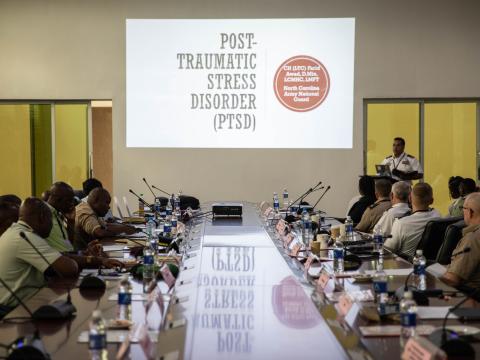Modeling Crowds to Prepare Troops for Urban Combat
U.S Joint Forces Command and Raytheon Company recently wrapped up an effort that lays the foundation to model large crowd behavior. Unlike other simulations that can model only up to 100 people, this new development incorporates hundreds of virtual persons. The work has applications to military operations, especially in training small units that are preparing to enter urban combat areas by providing reasonable expectations about how the people they encounter in cities will react.
The studies on crowd behavior modeling were conducted under a two-year cooperative research and development agreement (CRADA) between Joint Forces Command (JFCOM) and Raytheon. Mark Vinyard, the JFCOM principal investigator for the CRADA, explains that what researchers learned was not so much about crowd reaction but how to develop a testbed for crowd modeling. Now, others within the military can take the information obtained by the agreement and apply it to testing, training and analysis to optimize tactics, techniques and procedures (TTPs).
Vinyard emphasizes that crowd modeling simulations do not function like a crystal ball because human behavior always will have a modicum of unpredictability. Modeling with sociotechnical data is more difficult than modeling with data from hard physics. Researchers can create models for objects such as airplanes and vehicles and receive exact reactions because they and the laws of nature always behave the same way.
To overcome the variables involved in human simulation, troops training with the crowd behavior models will run the model multiple times to experience the widest range of reaction possibilities. Though the models will never give a definitive answer about how humans will behave, the researchers did learn that they could build a model for training that can help troops understand what to expect in terms of crowd behavior. “We laid that first brick in a foundation that we can build on using this crowd data set,” Vinyard says.
In addition to advancing crowd modeling, the CRADA also modeled the effects on crowds of nonlethal weapon systems, directed energy systems and kinetic weapons. Through the experiments, personnel were able to see how crowds might react when hit by the various types of weapons systems. The work with the directed energy systems was especially challenging because these systems emit a beam rather than kinetic ammunition. Also, though directed energy systems have been modeled in the past, they were frequently modeled as kinetic weapons that had directed energy effects. The CRADA team’s approach was different because it started from scratch and modeled the physics of the energy beam and how it performs.
Data from the various weapons were entered into a network, and CRADA team personnel used the data instrumentation and graphic user interface to produce graphs of different social behaviors. The crowd responses in the simulation were based on existing crowd behavior data to model a large crowd as well as friendly forces, their weapons, vehicles and the terrain.
The analysis from using the systems as an element of the CRADA can help the military to optimize TTPs in the employment of nonlethal-weapon directed energy systems. Vinyard says other elements in the U.S. Defense Department such as the Joint Nonlethal Weapons Directorate can move forward with the effort. He explains that JFCOM is not working with directed energy systems, and those were used as a stimulus for the modeling effort as the CRADA team pursued its research.
The next steps for the crowd-modeling portion of the CRADA is for others interested in the findings to build on the framework and improve the fidelity behind the crowd model used in training, specifically down to the small unit training. The work fits in with the military’s expectations for warfare in the future that foresee operations in urban environments, possibly even within megacities. JFCOM’s Joint Operating Environment 2008 document, for example, addresses the issues of urbanization and how that will affect combat operations in the future.



